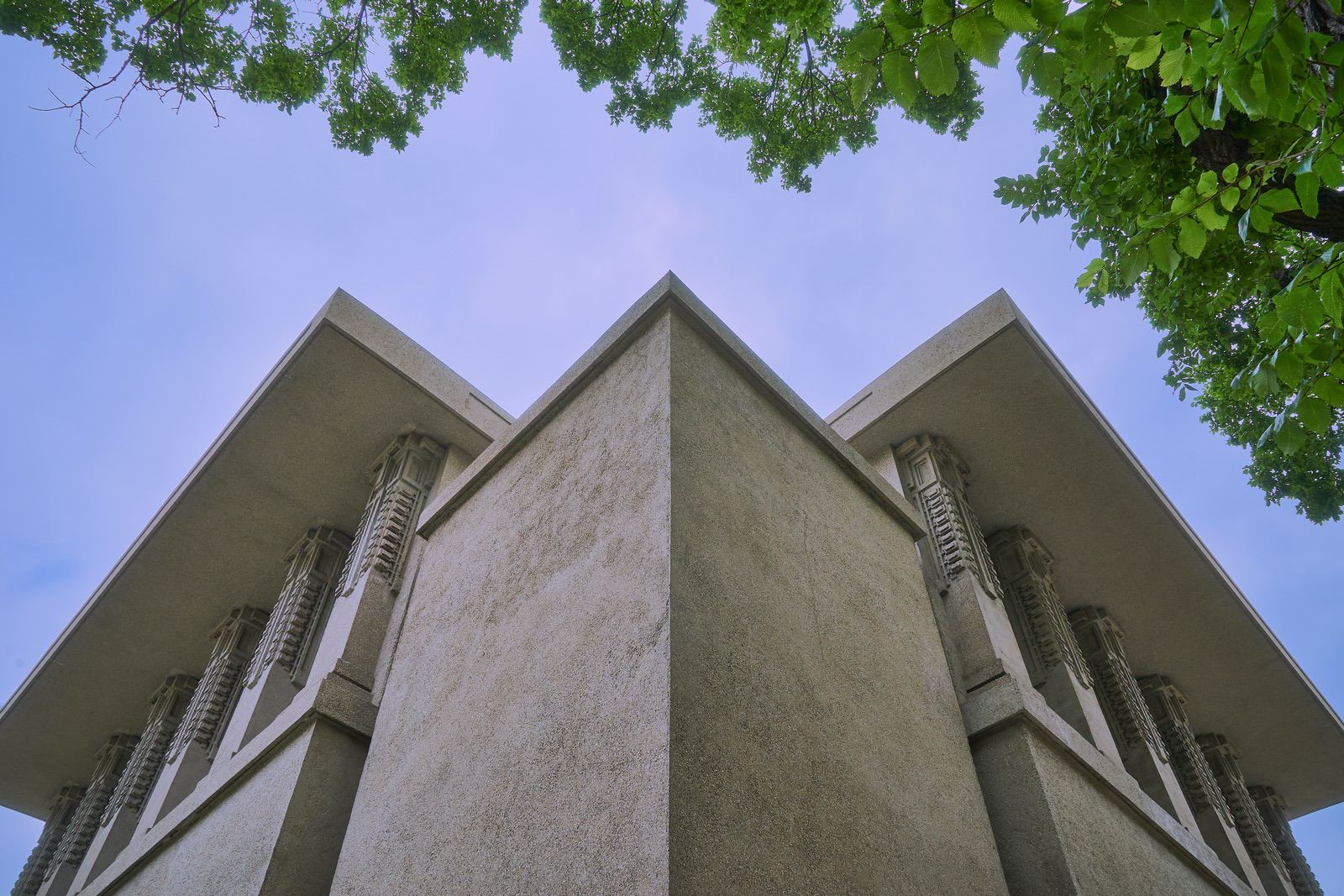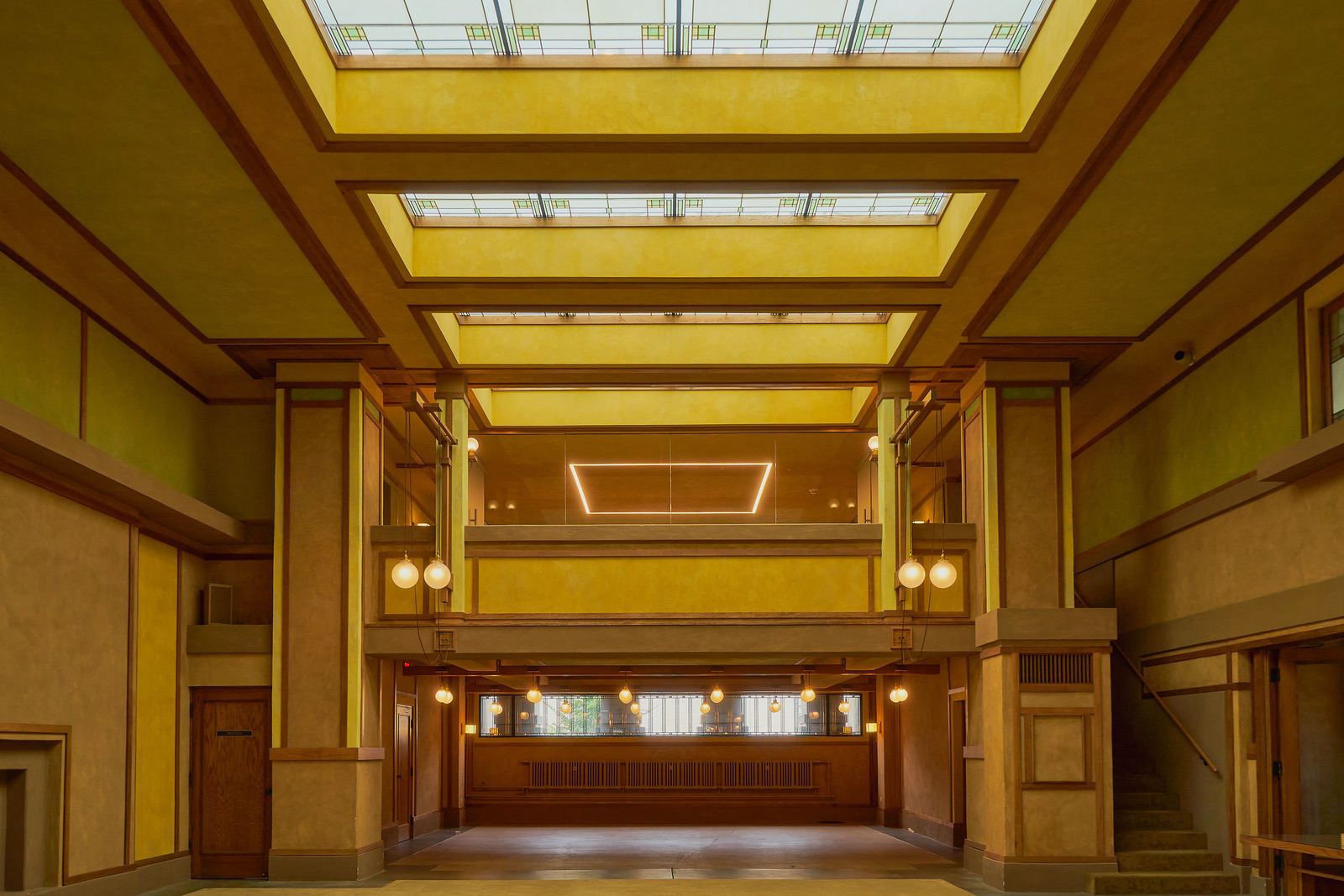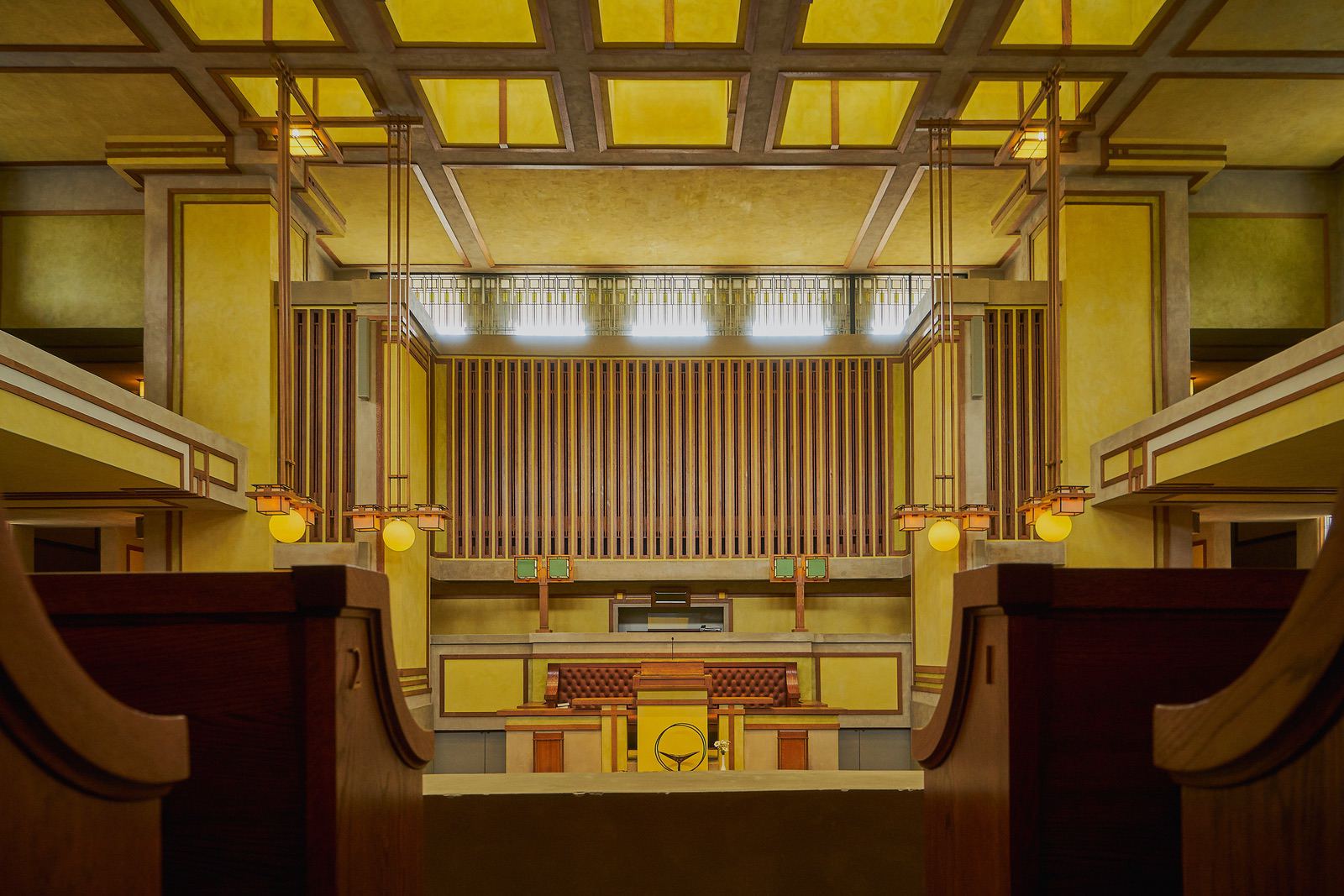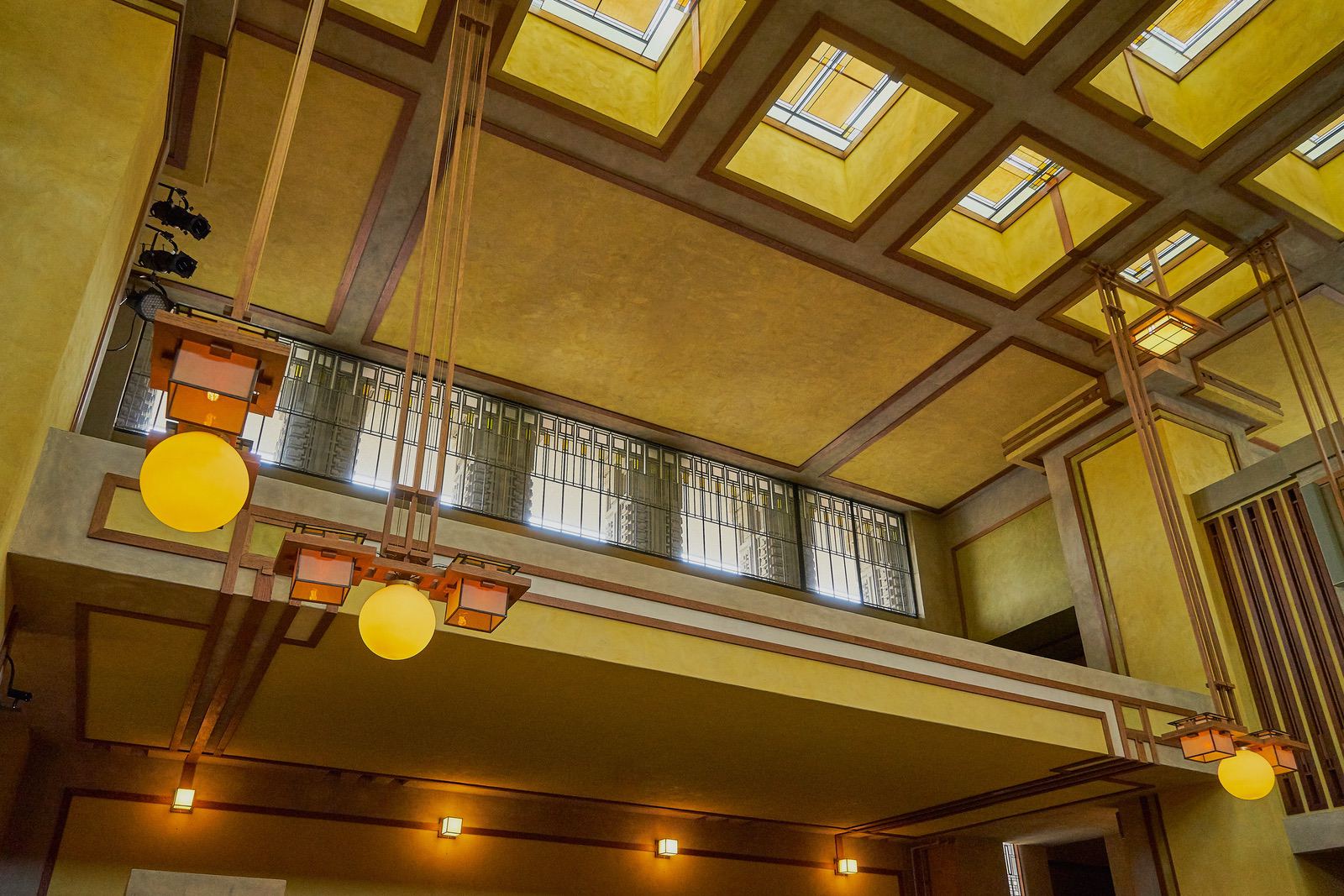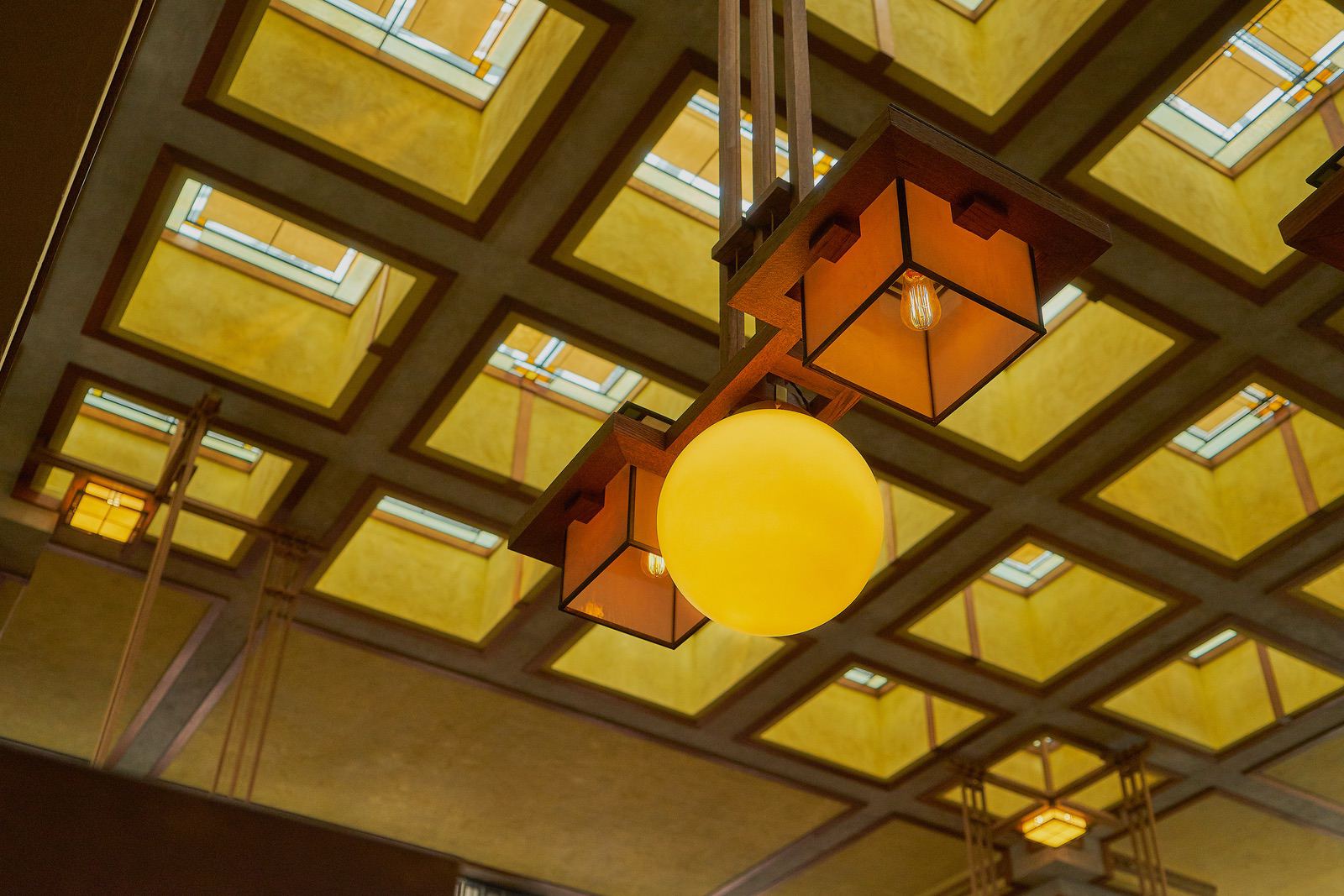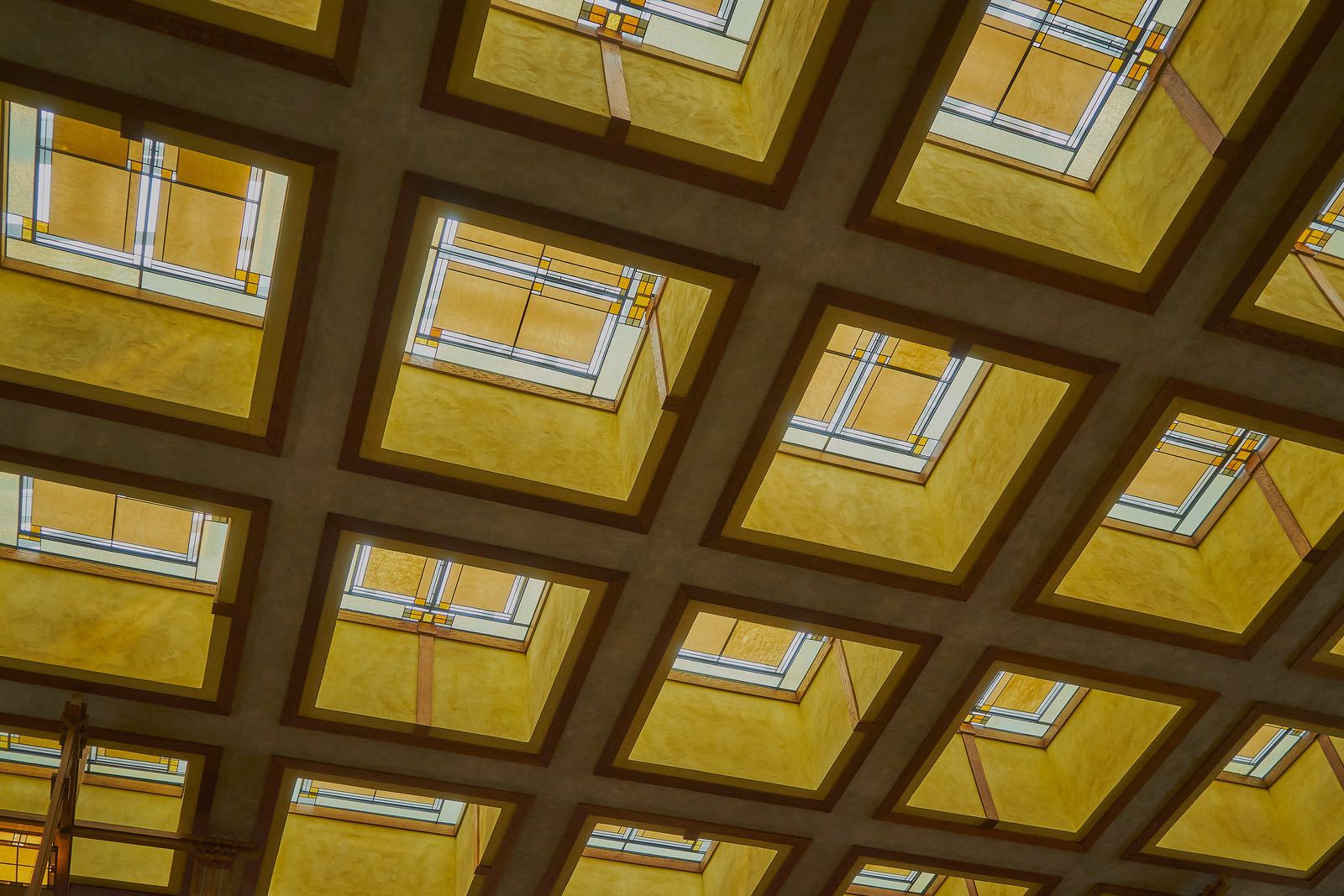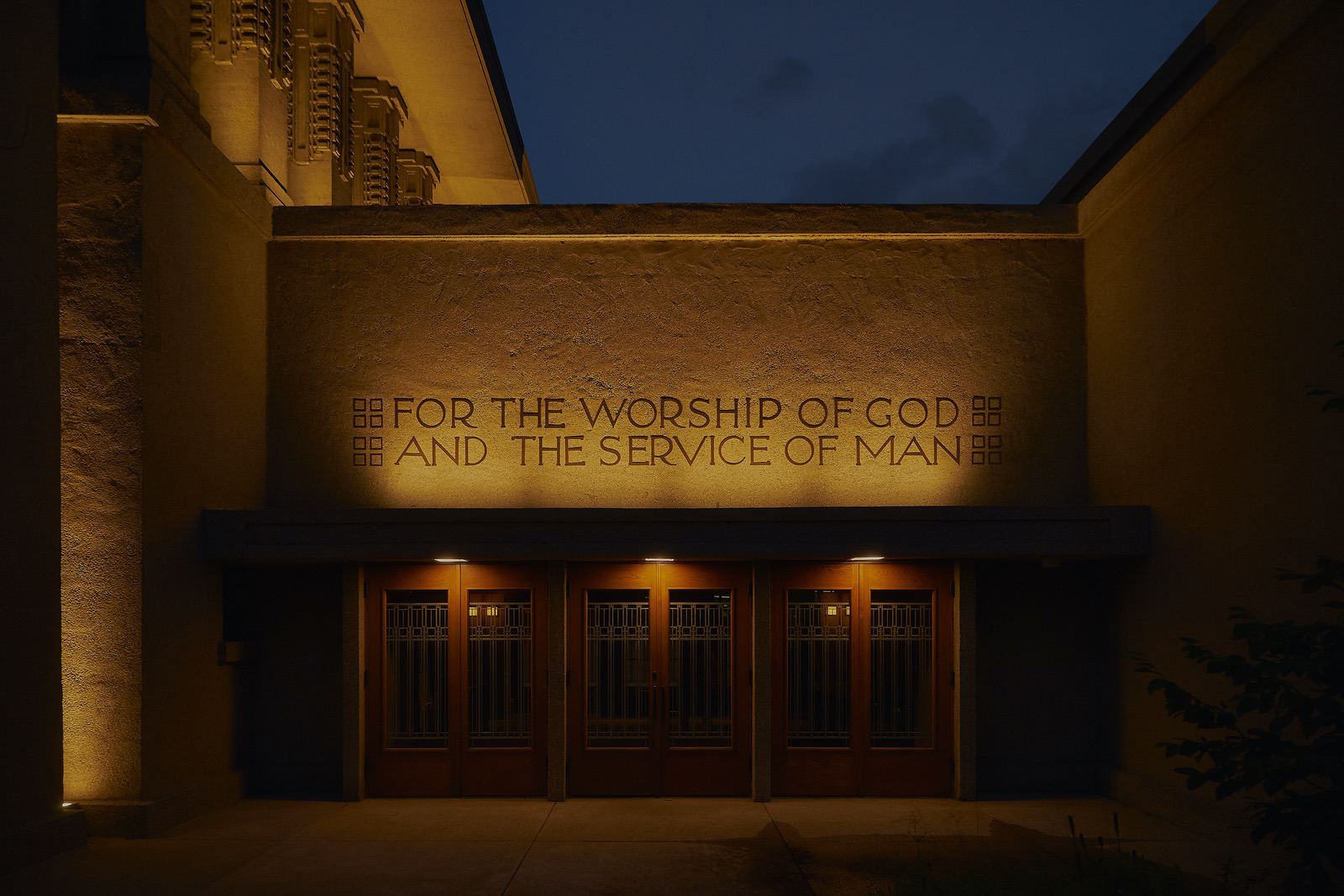
Following Frank: Unity Temple
There are, perhaps, few things more important to understanding Frank Lloyd Wright’s philosophy of architecture and design than his lifelong association with the Unitarian Universalists. Not only did the Unitarian Church provide the opportunity for his formal entry into the profession of architecture at the age of nineteen, but it would continue to provide opportunities throughout his career. In 1905, Wright would design a signature work for the the Unity Temple Unitarian Universalist Congregation in Oak Park, Illinois.
If you have followed Wright’s work for any length of time, you will certainly recognize some aspect of Unity Temple. From the outside, “Temple” seems a particularly appropriate moniker, as the structure evokes thoughts of ancient structures from around the world…all while being undoubtedly “modern.” The building is almost monolithic in its appearance and construction, as the poured concrete walls and columns give the building a feeling of weight and permanence…like it had been carved from a single block of stone, hundreds or thousands of years earlier. Although different in its method of construction, you can see hints at the Mayan Revival style that Wright would later make famous with the Ennis house, La Minitura, Hollyhock House, and others in California. The exterior columns even include a stylized Hollyhock motif, like its Los Angeles sibling. Overall, the exterior is a testament to Wright’s ability to synthesize a variety of styles in order to create something truly unique.
As imposing as the exterior of Unity is, the interior is equally welcoming. Just as with many of Wright’s designs, you are led along a path of discovery to arrive at the entry. It truly does feel like you are ascending the steps to an ancient temple. Once reaching the top, a bank of leaded glass double-doors allow passage to the large central foyer. Here, Wright employs his concept of “compression and release,” using the lower ceiling of the single-story room to push visitors into the more expansive areas that it connects — Unity Temple sanctuary and Unity House.
After checking in, we made our way into Unity House —the common/social area for the congregation. Even though I had probably seen hundreds of pictures of the two spaces, this part of the building seemed more familiar to me. I instantly recognized the long art glass skylights that soar above the central room and the pendulous globe light fixtures. As I stood there, it was difficult to imagine that something like this was designed in the early 1900s by a man born only two years after the end of the Civil War. There are few details that would reveal the true age of the space. Only the large fireplace and radiators, tucked into the wings, would indicate that it wasn’t a modern design. There are touches of Wright’s Prairie aesthetic, but even those are executed in a timeless fashion. Ornamentation is achieved through either simple woodwork or the colorful art glass and the light that it allows into the room. As beautiful as the space is, it was really only a tease of what was to come in the sanctuary.
After passing back through the foyer, we arrived at the doors to the Unity Temple Sanctuary. At the time of our visit, none of the doors were open and it was something of a mystery as to which one we should enter. Rather than opt for one of the central doors, we chose the passage to the far right, which, as luck would have it, was Wright’s intended ingress. After passing through, we found ourselves in the east cloister. These seating areas, located below the main floor, are a wonderful example of Wright’s mastery of space. The location of the upper and lower cloisters allows people seated in those areas easy view of the pulpit without craning their heads too far up or too far down. While the lower cloisters do feel a bit more spartan than the rest of the space, the experience is not oppressive and actually offers a wonderful view up to the main sanctuary floor, the pulpit, and the true “highlight” of the space.
Still, Wright is clearly using the principle of “compression and release” to encourage you out of the lower cloisters and up into the brighter areas of his design. As you walk up the steps at the ends of the cloisters, the architect hints again at what’s to come with narrow, vertically-oriented art glass windows in the stairwells. From the inside, these windows, adorned with the hollyhock motif, become much more apparent than from the outside, where they are hidden in deep recesses of the concrete walls. Here, light streams through the glass, leading you up the stairs and back into the open space of the sanctuary.
The “release” is breathtaking. After walking out from the stairwell, you are immediately greeted with your first full view of the main space, looking out over the benches and across to the pulpit. Before reaching the latter, however, your eyes are pulled upward, toward the cantilevered chandeliers, clerestory windows, and, higher, the true feature of the space — the recessed square art glass skylights. Like in so many of Wright’s designs, he employs light to direct the experience. During the day, sunlight beams into the highest reaches of the sanctuary, creating a shining halo around the space, while the skylights create a soft, subtly-colored glow, directly overhead. It really does seem that Wright intended to always nudge your gaze upward, which seems an appropriate goal in a religious space.
Thinking back on my visit, I wonder what it would be like to pick a seat in the upper level and watch the light change as the sun moves across the sky. It seems like Wright might have found a way to reveal some great mystery of the universe — if only you were to look at just the right time — much like the ancients would fashion temples to focus a beam of light on some important feature during the solstice.
Once you are in the sanctuary, there is a strong desire to linger and to fully explore every possible detail. The light fixtures are both sculptural and architectural, employing Wright’s favorite geometric juxtaposition of circle and square or, in this case, cube and globe. They visually anchor the corners of the sanctuary and, at the same time, draw your eye back up to the ceiling and skylights as you follow their triadic supports upward. Simple, yet plentiful, woodwork accentuates every part of the room, adding warmth and architectural interest. This is particularly true of the large flat surfaces, which would seem comparatively drab and uninteresting without the woodwork accents and subtle paint variations. Behind the pulpit, intricate wooden facades again lead the eye upward.
Photos can in no way do this place justice. There are so many details that come together to create a unified aesthetic. Each piece is independently remarkable, though, like a great fractal – each smaller piece inexplicably containing a representation of the whole. Perhaps that is Wright’s great revelation – his own Mandelbrot Set of cubes within cubes, perfectly accented by the sphere. I began to miss the space, even as I walked through the pulpit door and back into the foyer, before exiting into the late afternoon sun to further explore Oak Park.
Luckily, I would be pulled back to Unity Temple the following evening. After a day of exploring Wright sites around Oak Park, we would again find ourselves at 875 Lake Street, this time as blue hour was just beginning. As impressive as the exterior of Unity Temple is during the day, it pales in comparison to its evening variant. At night, the dramatic lighting fully reveals the detail of the exterior columns and accentuates the overall depth and dimension of the building. In this light, it is seems even more majestic and ancient, like the Parthenon or the temple at Luxor. The striking clouds and low-hanging, nearly full moon only added to the effect and I walked around the building, admiring it from every angle and firing off photos as I found the perfect perspectives.
Time passed too quickly here and, after admiring Unity Temple well into the darkness, it was time to head back to our temporary Oak Park abode. Another day of Frank Lloyd Wright adventures awaited us, the next day, on the other side of Chicago. No other experience in Chicago would equal that evening at Unity Temple, though.
Almost exactly a year after my visit to Unity Temple, it and seven other Frank Lloyd Wright designs were inscribed as UNESCO World Heritage Sites. At the time, I was still working at Fallingwater, which, along with Hollyhock House, Taliesin West, Taliesin, The Jacobs House, The Guggenhiem Museum, and The Robie House comprised the rest of the list. It was an exciting time to be involved in the Frank Lloyd Wright community and, as we would often say to our Fallingwater guests, Frank would likely ask, "What took so long?"
